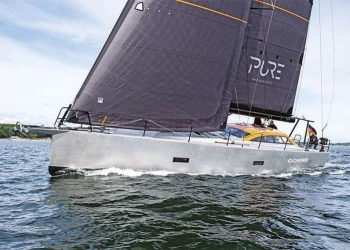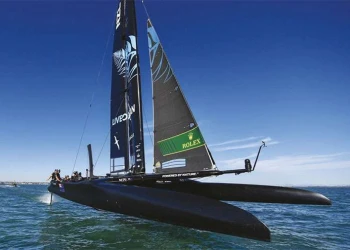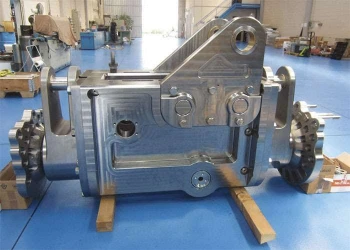
The Musto LPX collection is a streamlined version of its HPX ocean racing kit, focused on giving sailors as much freedom of movement as possible. It offers a full package for use both while racing and on shore afterwards
Musto’s lightweight LPX collection is exceptional and expanding
Designed for fast-paced inshore regattas where the sailors’ agility is just as crucial a factor as their strength is and endurance, Musto’s lightweight LPX collection is exceptional and expanding
Continuing development in the foiling world, the explosive growth of ultra-fast boats such as the Cape 31, plus improvements in materials technology have created the perfect opportunity for Musto to further develop and expand its LPX range of high-performance lightweight foul weather gear. The result is best-inclass technical clothing for inshore regatta racing that offers perfect solutions for all weathers.
In many ways the LPX collection is a much more streamlined version of the new HPX ocean-spec kit, focussed on allowing crewmembers to move around the boat as freely as possible. At the same time, a key part of the concept was to create a full team package for use both while racing and on shore afterwards. The range encompasses two lines that cover the needs of everyone from SailGP teams to the typical cut and thrust of inshore racing at regattas like Cowes Week, Kiel Woche and Cork Week. ‘The kind of major events where you might have intense sunshine with almost no wind one day and 25 knots plus driving rain on another,’ says Musto’s head of product Chris Holliman.
LPX is also increasingly favoured as an option for offshore racing in conditions that don't demand HPX kit. This is true even for competitors in The Ocean Race, where MPX or LPX is now seen as the best solution 70 per cent of the time. ‘Sliding on a lightweight LPX jacket takes a fraction of a second, so it’s a really appealing option for quick bursts on deck,’ adds Holliman.
The first generation of LPX was developed more than 20 years ago in the early days of the Extreme Sailing Series, which created a step change in the need to maximise athletes’ agility, while continuing to provide top-class protection from the elements. Since then the Gore-Tex membranes used, which have themselves improved over time, have always been the reference point for this type of racing.
The latest LPX generation was developed following a similar philosophy to the one that’s proved enormously successful with the new HPX products. These have already had “an incredible level of enthusiastic feedback” from Musto’s many ambassadors in the IMOCA 60 class.
LPX was designed from the outset as a complete three-layer system, with accessories, all of which dovetail together to work seamlessly, making it “a real game changer,” according to Holliman. The complete system is extremely flexible and adaptable, so it works across a full range of conditions for boats from TP52s to Cape 31s and even J/70s or SB20s.
There’s also a new line within the range, developed in conjunction with the French SailGP team, that’s dedicated to the demands of foiling. ‘Impact protection for when they crash down at 30-40 knots is a significant factor,’ says Holliman. At the same time, the very high apparent wind strengths encountered means this kit is designed to sit closer to the skin, yet the material used enables the athletes to move amazingly easily.
A further distinction is that these races are often comparatively short and teams have a coach boat that can pass extra layers of clothing across if necessary between racing. That’s a different scenario to Cowes Week, where you’re committed to the clothing you take on the boat for the day. ‘Most of the new LPX garments are a very streamlined version of the HPX concept, with changes focussed on the ability to move freely and quickly,’ says lead product designer Lucy Davis. ‘They have reduced pocketry and a much shorter jacket, with the collar sitting comfortably under the chin and a zip off hood.’
The outer layer includes jackets in both men’s and women’s fits, salopettes, two different shorts and a smock. The Gore-Tex fabric has excellent breathability and top-class waterhead rating of at least 28K.
The standard LPX shorts use a Gore-Tex fabric, plus an abrasion resistant seat with a slightly elasticated high back for continued protection when bending over. The Aero short is a different concept, optimised more for fair weather sailing, but when there’s still a risk of wet decks. A windproof fabric with water resistant coating is used for the front, while the seat has a waterproof material with taped seams. It’s therefore a very lightweight, very breathable fast drying garment, but you won’t get wet when sitting on damp decks after a tack.
Mid layers are also designed to maximise freedom of movement, which is achieved with stretch panels across the back and down the sides, plus articulated sleeves and under arm gussets. PrimaLoft Silver Active insulation provides a great balance of warmth to weight. ‘The stretch panels on the back under the arms are completely breathable, without insulation,’ says Davis. ‘When you’re working hard there's enough air moving around your body that you don't overheat.’
LPX next to skin layers include a long-sleeve top, short-sleeve T and a polo. They are made of an all singing, all dancing, four-way stretch sunblock fabric called Ice Cafe, which has a cooling finish integrated into the yarn. This starts to actively cool as soon as it comes in contact with water and can reduce body temperature up to two degrees. Carbon particles are built into the yarn for odour control and, like the cooling finish, can’t be washed out.
‘It looks great and it works great on the water,’ says Davis, ‘so it’s perfect for warm weather sailing and you can happily wear it to the pub.’ The Softshell has a jersey face and back, plus a 10K membrane. It's not intended as a fully waterproof product, but is a flexible option that gives some protection in light spray. The overall style has a sporty aesthetic, making it a versatile choice for both onshore activities and as stylish team attire.
Accessories include LPX Impact Knee Pads, which have big cut-outs at the back to eliminate material that would otherwise gather together when bending your knees. The Dynamic Pro ll Adapt shoe is a toplevel technical deck shoe, with great grip whether it’s wet or dry. It also dries really quickly.
There’s also a super-breathable cap with a tinted transparent visor, the LPX Gore-Tex Infinium cap. This offers the most breathable sun protection possible, while still allowing full vision for easy and accurate sail trimming.
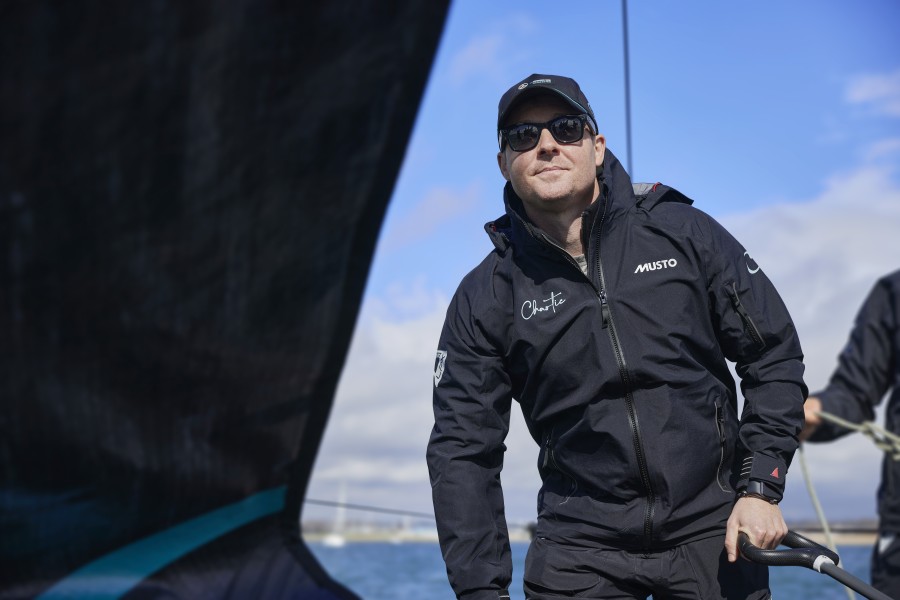
The LPX Foiling Long John is a close-fitting design, featuring high stretch neoprene for the lower half along with an abrasion-resistant seat panel. The upper body incorporates the same extremely durable 4-way stretch Cordura as found on the jacket hem, with its highly waterresistant coating. Despite the streamlined fit there’s comprehensive impact protection for hips and knees in the form of integrated pads developed by motorsports specialist G-Form.
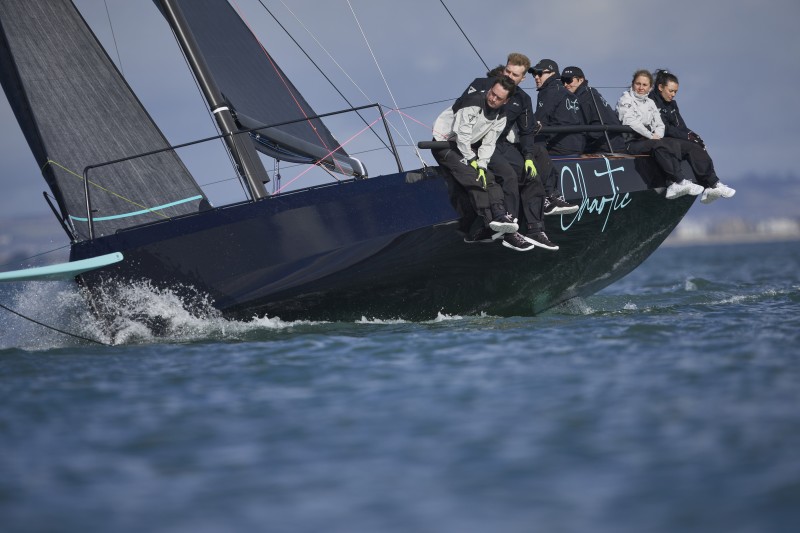
Given temperature regulation is such an important aspect of this type of competition, the foiling collection has both ThermoCool and ThermoHot base layers. The former keeps you cool when it’s hot and is made of the aforementioned fourway stretch Cordura fabric with long lasting durable water-resistant coating. The pants are cut to be looser at the top than in the lower leg, making it easy to bend over or squat down, without the clothing creating a restriction. The ThermaHot kit has the same fit but uses a fourway stretch jersey soft shell with a fleece backing and 10k membrane. Even though it’s not fully waterproof it has good resistance to spray and will keep you warm on cold days.
Despite the different needs of these two disciplines in competitive sailing, they share the same overall philosophy that informs the entire LPX range: lightweight, fast performance. There's therefore plenty of crossover potential between the foiling products and standard race kit, so don’t be surprised to see LPX Gore-Tex outerwear used by SailGP teams and products aimed at primarily at foiling boats at more mainstream regattas around the world.
‘Ultimately we’re trying to improve and optimise human performance,’ says Holliman. ‘That means anything we can do to improve comfort is important, as it helps sailors make the right decisions at the right times. That can make the difference between a gold and a silver medal.’
‘Our mindset is driven by the relentless pursuit of leveraging technology, fabrics, fit, and construction to truly make a difference in the final outcome,’ explains Davis. ‘Throughout the entire process, we have meticulously utilised top-notch technologies, premium fabrics, and trusted suppliers to create a comprehensive system within a single range, encompassing everything that teams require for this particular style of racing.



